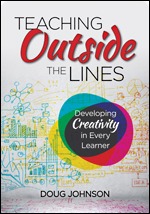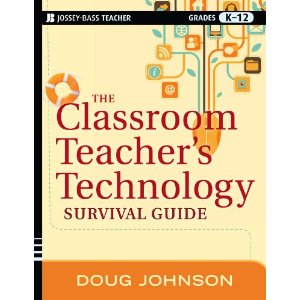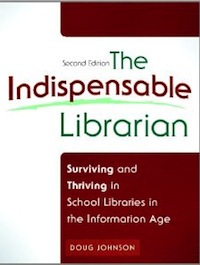Getting back in the groove - TIES helped
 Tuesday, December 5, 2006 at 04:22PM
Tuesday, December 5, 2006 at 04:22PM I'm having a very tough time mentally re-engaging with work, professional reading, and writing since Thanksgiving. Too much turkey, perhaps. The blogosphere and the professional journals seem to have gone into intellectual re-runs, or at least most writers seem to be playing variations on a theme. This observation, I'm sure, says much more about my personal mindset than the quality or topics of others' writings.
So it was good to have attended the TIES conference last Monday up in Minneapolis. (It's our "state" educational technology conference.) First time since I don't know when that I went only as a participant and not a presenter, since I didn't get my ducks in a row submitting a proposal. Just attending was sort of relaxing, actually. I should do it more often. Anyway, a few highlights for me:
-----------------------------------------------
Milt Dougherty opened with the keynote. The big take-a-way for me was a chart he showed dividing students into four quadrants: the authentically engaged; the artificially engaged (going through the motions); the disengaged; and the rebellious. (These terms are from memory and he had a source I did not get written down, thinking I could find his handouts online. If anyone has a better recollection of this or knows how to get the handouts, please let me know.)
Is there a way we can actually measure "engagement?" How do we in tie it to achievement? As a profession do we simply see engagement as a prima facie good? Those of us in technology especially talk a lot about it as a primary reason for technology. Is it enough?
-----------------------------------------------
I was disappointed in the presentation made by the Gaggle.net representative. Instead of an informative demonstration of his product, he turned the session into a "let's scare the educators into using our product" exercise. Gaggle.net is a great product; the threat of lawsuits and other terrorist tactics simply aren't necessary to get people to use it. The presentation lowered my opinion of the company.
-----------------------------------------------
Treating the same topic in a much more positive and focused manner, Dave Eisenmann and Kim Hoehne from the Minnetonka Public Schools gave an outstanding presentation on the efforts their district is making to educate students, teachers, and especially parents on tech "dangers" kids are facing - everything from cell phone as cheat aid to online pornography (production as well as consumption) to social networking misuse to video game "values."
Some sites mentioned during the talk:- Minnetonka Parent Education links to Online Safety information.
Internet Archives: The Wayback Machine: Just because you took that embarrassing picture off your MySpace account, doesn't mean that it doesn't still exist - somewhere in cyberspace. Frightening.
NetLingo's Top 20 Internet Acronyms Every Parent Needs to Know. - David Walsch's MediaWise web resources (What parents need to watch (out) for in video games, advertisements, movies, etc.
So OK, now I am feeling really guilty for not doing more here in Mankato with our parents and community.
-----------------------------------------------
In his lunchtime talk, "Can Schools Regulate Cyberbullying, Harassment and Social Networking?", Dr. Scott McLeod from the U of Minnesota presented 6 case studies of schools attempting to regulate student online speech. Guess what? The schools lost 5 of the 6 cases when they disciplined a student for the production of off-site web content - much of it quite nasty. Can you say, Tinker vs Des Moines? Duh. Scott's PowerPoint and podcast for the session are available here.
He also addressed a school's ability to regulate/discipline employees' online speech. Sounds like if your blog gives your supervisor a headache, disciplinary action is OK. Have I mentioned lately how much I love my district, my boss, my job???
As always, Scott did an outstanding job with both content and his lively presentation style.
-----------------------------------------------
 After publicly fussing about there not being an affordable and robust computer especially designed for students this fall, I thought I better go see what the Nova 5000 was all about. This machine is definitely a step in the right direction: rugged, lots of input/output options, basic productivity software built in and wireless connectivity. I am uncertain about the screen size, its battery life is still only 4 hours and its price (quoted at $600 plus $200 for an added 3 year warrantee) is still double what I really want to pay (you can buy a "real" laptop for this amount.) But it is the most exciting piece of hardware I saw at this conference - actually at any conference for the past few years. We are ordering one for evaluation purposes here. My goal is a sustainable 1:1 computing environment in this district before I retire or am fired or am committed or go into hiding. I see glimmers of hope.
After publicly fussing about there not being an affordable and robust computer especially designed for students this fall, I thought I better go see what the Nova 5000 was all about. This machine is definitely a step in the right direction: rugged, lots of input/output options, basic productivity software built in and wireless connectivity. I am uncertain about the screen size, its battery life is still only 4 hours and its price (quoted at $600 plus $200 for an added 3 year warrantee) is still double what I really want to pay (you can buy a "real" laptop for this amount.) But it is the most exciting piece of hardware I saw at this conference - actually at any conference for the past few years. We are ordering one for evaluation purposes here. My goal is a sustainable 1:1 computing environment in this district before I retire or am fired or am committed or go into hiding. I see glimmers of hope.
 ties2006
ties2006 







